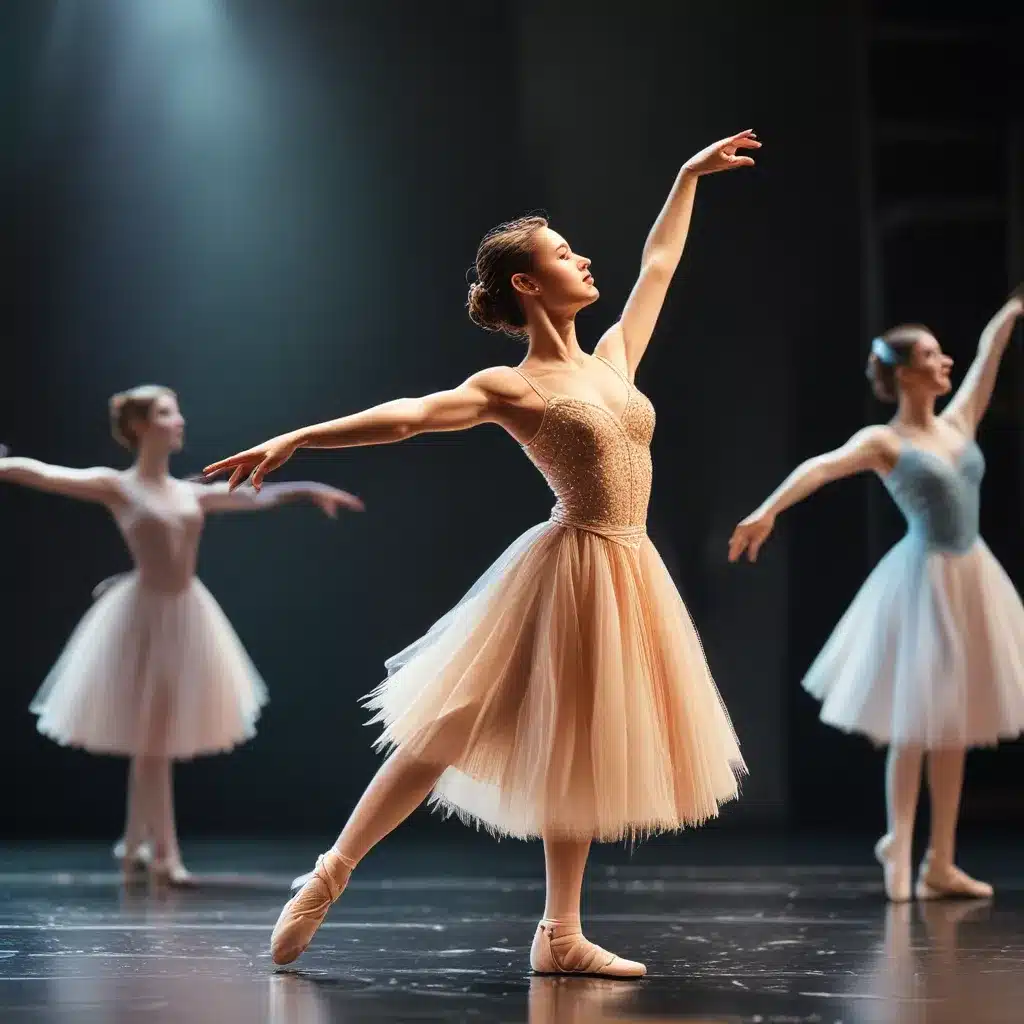
The Rhythmic Refuge of Ballet in the Whirlwind of Musical Theater
Picture this: you’re sitting in the dimly lit auditorium, the air thick with anticipation. The orchestra swells, and suddenly, the stage erupts in a burst of energy, as a troupe of dancers takes center stage. Their movements are a seamless blend of grace and power, their bodies moving with a fluidity that defies gravity. And at the heart of this captivating performance lies the timeless art of ballet.
As a lifelong ballet enthusiast, I’ve always been fascinated by the ways in which this elegant dance form has woven itself into the fabric of musical theater. From the glittering production numbers of Broadway’s golden age to the contemporary, genre-bending productions of today, ballet has consistently proven itself to be a versatile and indispensable component of the musical theater experience.
The Foundations of Balletic Brilliance
The Musical Theater Center has long been a bastion of ballet-infused performance, where young dancers are nurtured and encouraged to explore the boundless possibilities of this art form. As I walk through the halls, I’m struck by the sense of discipline and dedication that permeates the space. Here, the fundamentals of ballet – the precise placement of the feet, the elegant extensions of the limbs, the effortless transitions between positions – are honed to perfection.
But it’s not just about the technical mastery. The instructors at the center understand that ballet is more than just a series of steps – it’s a language of expression, a means of conveying emotion and telling stories. Through their immersive classes, they guide their students in unlocking the expressive power of ballet, empowering them to use their bodies as instruments of storytelling.
The Marriage of Ballet and Musical Theater
One of the most fascinating aspects of the relationship between ballet and musical theater is the way in which these two art forms have continuously influenced and enriched each other. In the golden age of Broadway, choreographers like Agnes de Mille and Jerome Robbins seamlessly blended the classical techniques of ballet with the infectious energy of musical theater, creating iconic moments that have become ingrained in our cultural consciousness.
Take, for instance, the legendary “Dream Ballet” sequence from the 1943 production of Oklahoma! As the lead character, Laurey, drifts off to sleep, the stage explodes in a dream-like vision, with the ensemble of dancers moving with a captivating fluidity that evokes the inner workings of Laurey’s subconscious. The ballet sequence not only advances the plot but also serves as a powerful expression of the character’s emotions and desires.
The Versatility of Ballet in Contemporary Musical Theater
While the enduring influence of classical ballet in musical theater is undeniable, the art form has also proven itself to be remarkably adaptable to the ever-evolving landscape of contemporary productions. Today, we see ballet integrated into musical theater in increasingly innovative and unexpected ways, pushing the boundaries of what’s possible.
Take, for instance, the critically acclaimed revival of West Side Story, which premiered in 2020. In this production, the choreographers seamlessly blended the sharp, angular movements of contemporary dance with the elegant lines and precise footwork of classical ballet, creating a visual language that perfectly captured the gritty, urban setting of the story. The result was a mesmerizing and emotionally charged performance that left audiences both breathless and deeply moved.
Cultivating a New Generation of Ballet-Infused Performers
As I continue my journey through the Musical Theater Center, I’m struck by the palpable energy and enthusiasm of the young dancers who call this place home. They are a new generation of performers, steeped in the rich traditions of ballet but eager to push the boundaries of what’s possible.
In the center’s comprehensive curriculum, students are exposed to a diverse array of dance styles, from the lyrical grace of contemporary to the infectious rhythms of tap. But at the heart of it all is the timeless elegance of ballet, a foundation that enables these young dancers to develop a level of technical mastery and artistic expression that sets them apart.
The Symbiotic Relationship: Ballet and Musical Theater
As I reflect on the enduring partnership between ballet and musical theater, I’m struck by the symbiotic nature of their relationship. Ballet, with its emphasis on precision, discipline, and emotional expression, provides the perfect complement to the larger-than-life spectacle of musical theater. And in turn, musical theater offers ballet a platform to showcase its versatility and relevance, reaching new audiences and inspiring new generations of dancers.
It’s a relationship that has stood the test of time, evolving and adapting to the changing tides of popular culture, yet always maintaining its core essence. And as I watch the students at the Musical Theater Center hone their craft, I can’t help but feel a sense of excitement and anticipation for the future – a future where the timeless elegance of ballet continues to captivate and inspire, weaving its way seamlessly into the ever-evolving world of musical theater.
Conclusion: The Enduring Legacy of Ballet in Musical Theater
In the end, the versatility of ballet in musical theater is a testament to the power of art to transcend boundaries and connect with audiences on a deep, emotional level. Whether it’s the grand, sweeping productions of Broadway or the intimate, experimental stages of off-Broadway, ballet has proven time and time again to be an indispensable component of the musical theater experience.
And as I leave the Musical Theater Center, I can’t help but feel a sense of wonder and excitement for the future. For here, in this vibrant hub of creativity and innovation, the next generation of ballet-infused performers is being nurtured, empowered, and inspired to push the boundaries of what’s possible. And who knows – perhaps one day, their performances will captivate and enthrall audiences, just as the ballet-infused masterpieces of the past have done.

